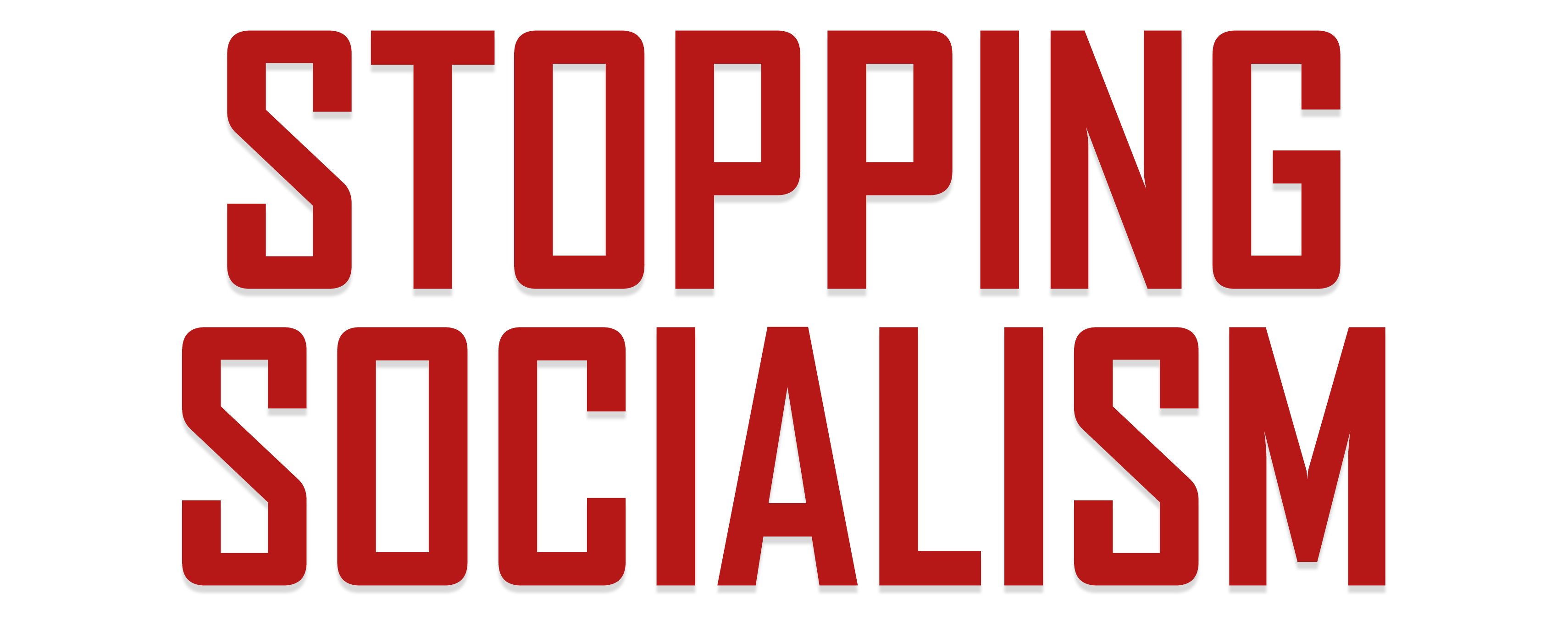Environmental, social, and governance (ESG) scores are an insidious mechanism by which a cabal of ideologically aligned influential interests working through unelected supranational organizations are attempting to “reset” the global financial system to their advantage. At its core, this emerging design circumvents national sovereignty, free markets, and individual rights by altering traditional financial methods of assessing risk and allocating capital and credit. This attempted shift from “shareholder capitalism” to a “stakeholder collectivism” model hinges upon assigning companies, and soon individuals, arbitrarily determined ESG social credit scores. These scores mandate subjective and politically motivated commitments to “climate” and “social justice” objectives, which draw heavily from the United Nations-sponsored Sustainable Development Goals.[1]
Essentially, ESG operates by punishing poorly scored companies with reduced or altogether eliminated access to capital and credit, while highly scored companies receive substantial capital in-flows, in addition to tax breaks, grants, access to “special financial vehicles,” preferential contracting, and potentially other yet-to-be-defined advantages.[2] Ultimately, these measures are designed to centralize power and wealth in the hands of unelected technocrats, central bankers, regulators, and globalist institutions. The full institutionalization of ESG—internationally and domestically—would represent a major step towards consolidating a unitary global governance model, ultimately causing the dissolution of free markets, national sovereignty, due process under the law, and individual liberty.[3]
Below is a brief summary of central bank digital currencies (CBDCs) and how they can be wielded against society to enforce ESG compliance.
CBDC Background
Though technically a form of digital currency, CBDCs are vastly different from their digital cousins: cryptocurrencies. By utilizing revolutionary technological innovations such as blockchain and cryptography, cryptocurrencies can afford their users the ability to transact with one another anonymously, efficiently, and safely, without the oversight of a trusted third party such as a financial institution, credit card company, or payment processor. Whereas cryptocurrencies can be designed to be decentralized, mass-distributed, and publicly accessible by society through competing free-market mechanisms, CBDCs are designed to be fully centralized, private, and controllable by central banks and the interests they serve. Moreover, they can be programmed down to the individual unit and transaction, dictating how they are possessed and used by the holder.[4]
Central bankers, governments, international organizations, and financial institutions have rapidly begun developing CBDC programs due to the threat cryptocurrencies pose to their power. Nearly 100 countries—including the United States, which has rapidly scaled up its CBDC development efforts–have CBDC initiatives underway that would grant central banks panoptic centralized control over all financial transactions. As Bank of International Settlements General Manager Agustin Carstens gloated, “We don’t know who’s using a $100 bill today and we don’t know who’s using a $1,000 peso bill today. The key difference with the CBDC is the central bank will have absolute control on the rules and regulations that will determine the use of that expression of central bank liability. And also, we will have the technology to enforce that.”[5]
CBDCs and ESG
As Carstens alluded to, advances in technology have allowed CBDCs to be infinitely programmable. Financial artificial intelligence expert Clara Durodie explains, “Programmability means that at any point in time the algorithm could be tweaked and your money can be controlled, in ways in which you, the owner, don’t have any access to.” [6] It is not difficult to see how such programmability could be weaponized to not only coerce ESG compliance, but also punish or reward any kind of societal behavior desired by the controllers of the CBDC system.
For example, limits could be placed upon the amount of gasoline—or any carbon-intensive product—one can purchase. Individuals and businesses with better “social scores” could be given direct government subsidies or lower interest rates. CBDCs could coerce individuals towards plant- or insect-based diets. Central bankers and regulators could throttle transaction speeds or collect additional fees on transactions with “riskier” companies possessing low ESG scores, to shift consumption towards high scoring companies. Chillingly, individuals and companies deemed particularly “dangerous” could have their digital wallets temporarily deleted or permanently frozen, similar to how the United States government uses economic sanctions to seize assets from foreign threats such as Russian oligarchs.[7] Or, how simple Canadian truckers were deprived access to their financials in a much more insidious and efficient way.
In fact, ESG activists are already clamoring for CBDCs to be utilized in this exact way. A 2021 Forbes article suggests CBDCs could “erase things we want less of, like carbon and smoking,” “allow an economic policy to be laser-guided to favor consumption of low carbon goods,” give discounted interest rates to companies that enforce ESG’s diversity and inclusion goals, allow banks to lend on a quid-pro-quo basis to borrowers committed to decarbonizing the economy, and devise green quantitative easing and bailout programs for ESG-adherent companies. The author concludes, “The CBDC proposition offers a unique opportunity to introduce multiple functions at once and launch an ‘invisible hand’ dynamic, re-allocating capital away from the extractive and degenerative economy and towards a regenerative, inclusive, and fully decarbonized economy.”[8]
These are only a few examples of the ways in which CBDCs could advance the goals of ESG’s architects—who, uncoincidentally, happen to be the same individuals and organizations at the forefront of CBDC development.[9] Worse, a national CBDC is gaining traction in the United States and appears to be nearing fruition.
Current Status in the United States
In the United States, the Federal Reserve and the Biden administration have conducted substantial research and development related to a national CBDC, and are signaling imminent widespread adoption. The Federal Reserve has been working with MIT—an effort coined as “Project Hamilton”—to build out the technological infrastructure necessary for supporting hundreds of thousands of transactions occurring simultaneously over a Fed-controlled blockchain network.[10] In tandem, the Biden administration has released the “First-Ever Comprehensive Framework for Responsible Development of Digital Assets” stemming from a six month research effort across nearly all federal agencies spawned by a March 2022 executive order.[11]
Though there are two Republican-sponsored bills making their way through Congress designed to protect Americans from this novel form of economic totalitarianism, much more pushback is needed at both the state and federal levels of government to protect the American people from the destruction of the fundamental principles surrounding freedom outlined clearly in the Bill of Rights. As a recent City Journal author contends, “If not deliberately and carefully constrained in advance by law, CBDCs have the potential to become even more than a technocratic central planner’s dream. They could represent the single greatest expansion of totalitarian power in history. Never has there been any regime with such omnipotent insight into and control over its people’s every transaction as what CBDCs may soon make possible.”[12]
CBDCs and ESG systems must both be strenuously opposed by all Americans valuing liberty, free markets, self-ownership, and rights to property in a free republic.
[1] United Nations, “Sustainable Development,” Department of Economic and Social Affairs, accessed July 12, 2022, https://sdgs.un.org/goals
[2] Mark Bergman et al., “Introduction to ESG,” Harvard Law School Forum on Corporate Governance, August 1, 2020, https://corpgov.law.harvard.edu/2020/08/01/introduction-to-esg
[3] For more information on the basics of ESG, see: Justin Haskins and Jack McPherrin, “Understanding Environmental, Social, and Governance (ESG) Metrics: A Basic Primer,” The Heartland Institute, January 26, 2022, https://www.heartland.org/publications-resources/publications/understanding-environmental-social-and-governance-esg-metrics-a-basic-primer
[4] For a more detailed explanation of cryptocurrencies and CBDCs, see: James Corbett, “The Bitcoin Psyop Explained,” Corbettreport.com, September 30, 2017, https://www.corbettreport.com/the-bitcoin-psyop-explained/
[5] The European Union Times, “Bank Says ‘Ban on Cash’ Will Give Central Banks ‘Absolute Control’ Over Your Money,” October 10, 2022, https://www.eutimes.net/2022/10/banker-says-ban-on-cash-will-give-central-banks-absolute-control-over-your-money/
[6] Quoted within: Ian Horne, “Fintech CBDCs, and the S in ESG: Just because we can, doesn’t mean we should,” Citywire.com, July 1, 2022, https://citywire.com/new-model-adviser/news/fintech-cbdcs-and-the-s-in-esg-just-because-we-can-doesn-t-mean-we-should/a2391370
[7] For discussion of these possibilities and more, see: Kevin Stocklin, “Biden Admin Takes Steps Toward a Digital Dollar,” The Americana Conservative, May 24, 2022, https://www.theamericanconservative.com/biden-admin-takes-steps-toward-a-digital-dollar/; N.S. Lyons, “CBDC Caution,” City Journal, March 22, 2022, https://www.city-journal.org/central-bank-digital-currency-caution; Aubrey Strobel, “CBDCs Will Be the End of American Freedom,” Newsweek, January 27, 2022, https://www.newsweek.com/cbdcs-will-end-american-freedom-opinion-1673676; Norbert Michel, “Central Bank Digital Currencies and Freedom Are Incompatible,” Forbes, July 15, 2022, https://www.forbes.com/sites/norbertmichel/2022/07/15/central-bank-digital-currencies-and-freedom-are-incompatible/?sh=6211a0343e4d; Paul Jossey, “Central Bank Digital Currencies Threaten Global Stability and Financial Privacy,” Competitive Enterprise Institute, February 2, 2022, https://cei.org/studies/central-bank-digital-currencies-threaten-global-stability-and-financial-privacy/
[8] Frank Van Gansbeke, “Why Central Bank Digital Currencies (CBDC) Now And What They Could Mean For Climate Change? (2/2)” Forbes, June 27, 2021, https://www.forbes.com/sites/frankvangansbeke/2021/06/27/why-central-bank-digital-currencies-cbdc-now-and-what-they-could-they-mean-for-climate-change-22/?sh=708992572f23
[9] Jack McPherrin, “ESG: Primary Architects and Implementers,” The Heartland Institute, https://www.heartland.org/_template-assets/documents/esg/PolicyTipSheetESG4.pdf
[10] See: Federal Reserve Bank of Boston, “Project Hamilton Phase 1 Executive Summary,” February 3, 2022, https://www.bostonfed.org/publications/one-time-pubs/project-hamilton-phase-1-executive-summary.aspx#:~:text=In%20light%20of%20continued%20innovation,balances%20and%20physical%20currency%205; MIT Digital Currency Initiative, “Project Hamilton – Building a Hypothetical Central Bank Digital Currency,” accessed September 14, 2022, https://dci.mit.edu/project-hamilton-building-a-hypothetical-cbdc
[11] See: White House, “FACT SHEET: White House Releases First-Ever Comprehensive Framework for Responsible Development of Digital Assets,” September 16, 2022, https://www.whitehouse.gov/briefing-room/statements-releases/2022/09/16/fact-sheet-white-house-releases-first-ever-comprehensive-framework-for-responsible-development-of-digital-assets/; White House, “Executive Order on Ensuring Responsible Development of Digital Assets,” March 9, 2022, https://www.whitehouse.gov/briefing-room/presidential-actions/2022/03/09/executive-order-on-ensuring-responsible-development-of-digital-assets/
[12] N.S. Lyons, “CBDC Caution.”
Jack McPherrin ([email protected]) is a managing editor of StoppingSocialism.com, research editor for The Heartland Institute, and a research fellow for Heartland's Socialism Research Center. He holds an MA in International Affairs from Loyola University-Chicago, and a dual BA in Economics and History from Boston College.






